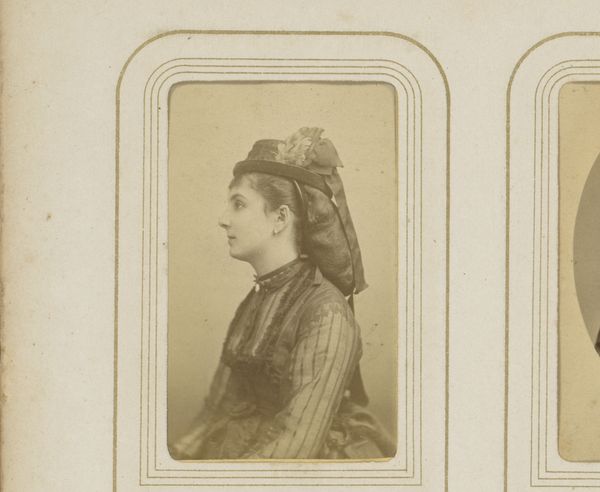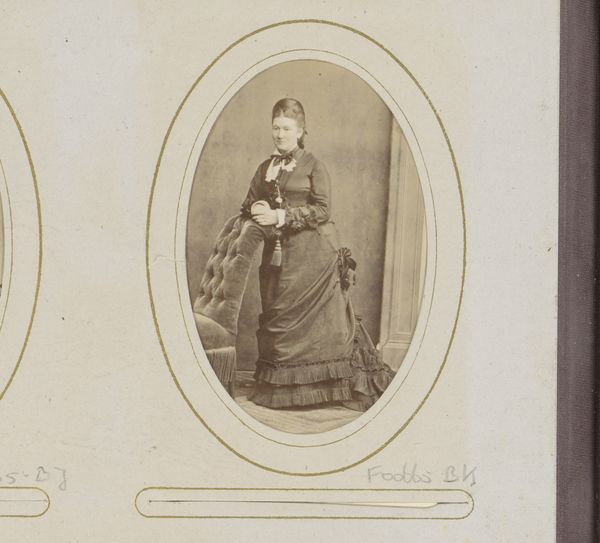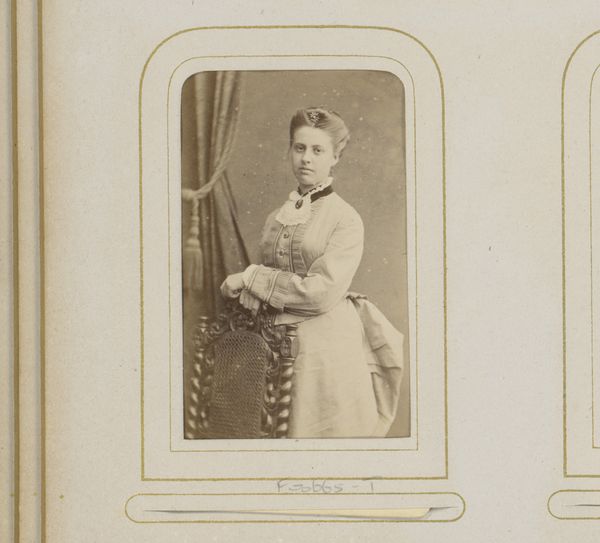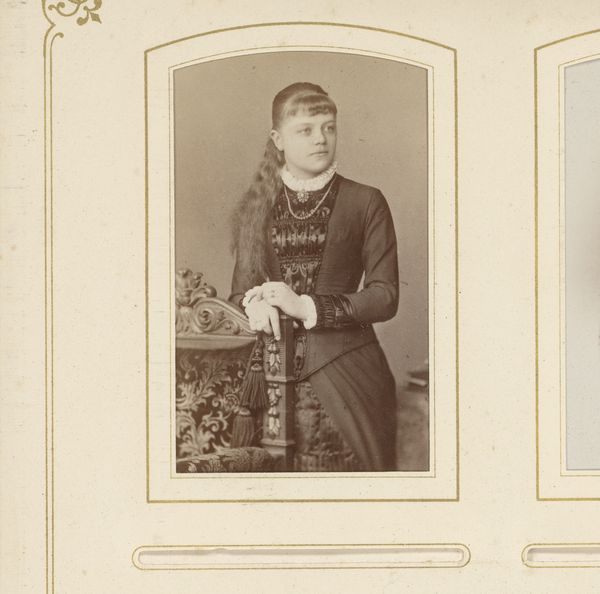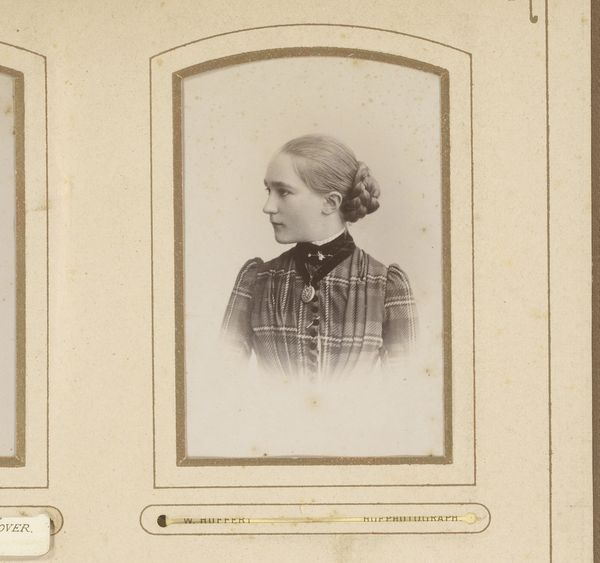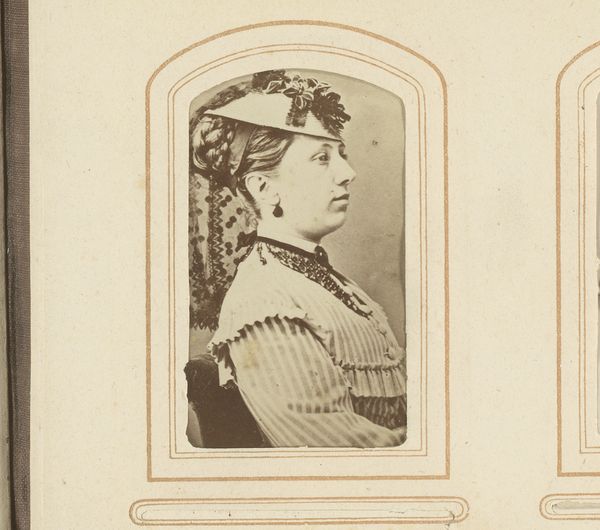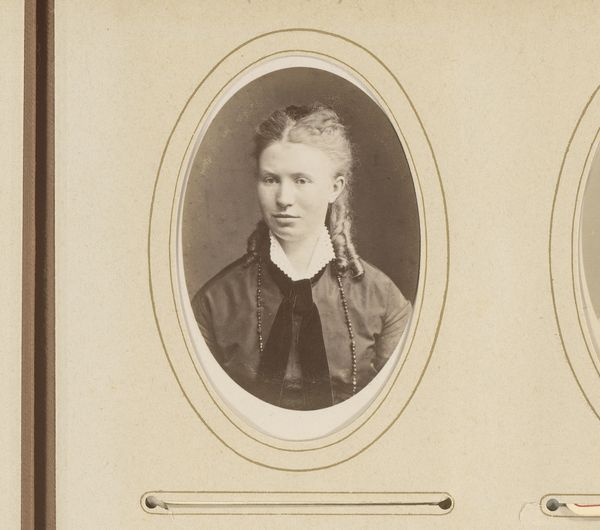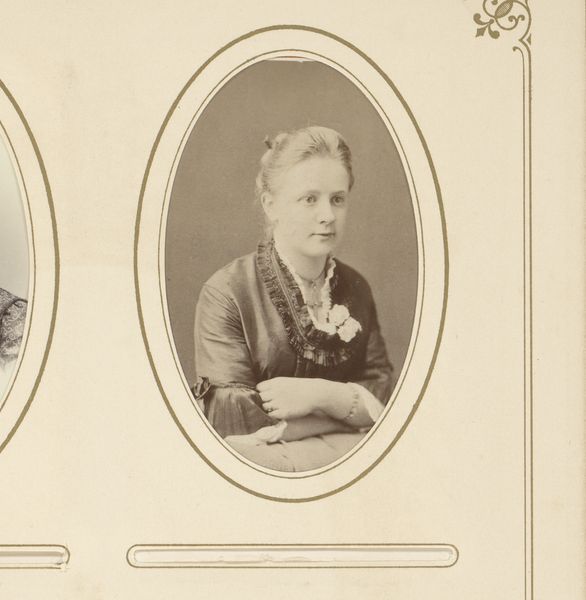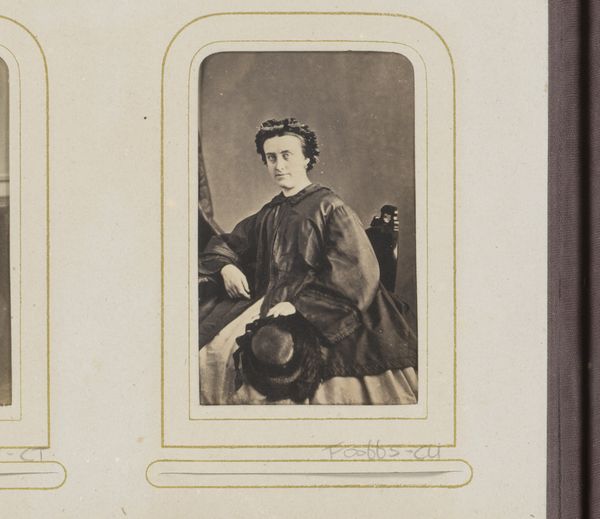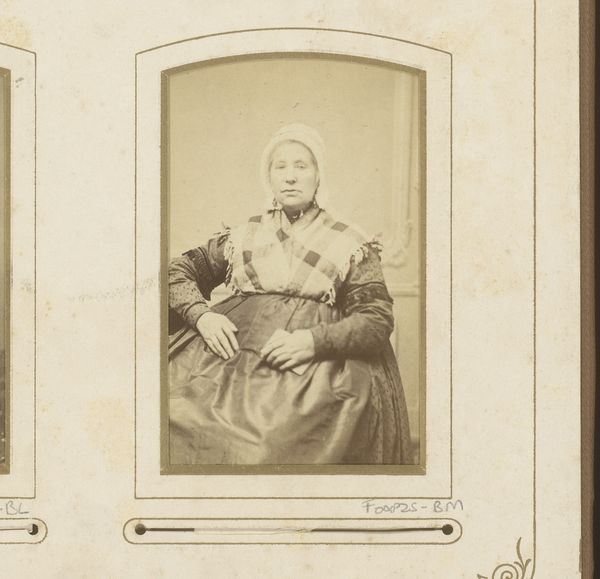
#
aged paper
#
toned paper
#
photo restoration
#
charcoal drawing
#
charcoal art
#
historical photography
#
unrealistic statue
#
19th century
#
charcoal
#
statue
Dimensions: height 83 mm, width 51 mm
Copyright: Rijks Museum: Open Domain
Curator: Here we have a portrait from the late 19th century, made between 1879 and 1887. The artist is Albert Greiner. The piece is simply titled, "Portret van een vrouw met witte muts," or "Portrait of a Woman with a White Bonnet." It is currently held here at the Rijksmuseum. Editor: Immediately, I'm drawn to the stillness of the figure, which is heightened by the limited tonal range. It creates a sense of quiet dignity, almost an iconic representation rather than an individual. Curator: It’s an interesting tension, isn't it? The softness of the charcoal aims for realism, but the very material suggests something reproducible. Greiner was working at a time when photography was booming. How does portraiture function then? What kind of labor goes into it? Editor: That’s a fascinating question. Visually, the contrasting textures in the piece intrigue me – the smooth, almost porcelain quality of her face against the rougher hatching defining the fabric of her dress and the bonnet itself. I find a study in contrasts there. Curator: And look at the detail in that bonnet. It’s not just a bit of fabric; it's lace, intricately rendered. Greiner, by focusing on it, is drawing our attention to the work, perhaps the labour of women in that era. The necklace also suggests status and, by extension, the networks of commerce and consumption that shaped her life. Editor: Semiotically speaking, those elements communicate specific messages of social standing, piety perhaps, and regional identity given that distinctive head covering. The dark and light create a somber mood but are ultimately about the beauty of light on a woman's features. Curator: Exactly! So the piece functions as an artwork, a status symbol, and a historical document simultaneously. Looking at the means of production gives the whole thing added value. Editor: Absolutely, Albert Greiner's choices highlight visual structures as well as historical ones and make us consider what photography means. I’ve found it valuable to decode the pictorial language, appreciating the formal decisions at play. Curator: For me, understanding the socioeconomic conditions really enhances my engagement with such artwork. It prompts reflections about the people, tools, and forces required in image making of this period.
Comments
No comments
Be the first to comment and join the conversation on the ultimate creative platform.
